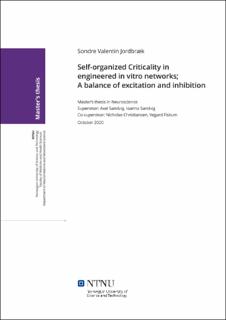| dc.description.abstract | The emergence of critical dynamics has been associated with the balance of excitation to inhibition (E/I). The aim of this thesis was to explore the relationship of E/I balance with emergence of critical dynamics, stability of critical dynamics and critical resilience. This was examined by creating an in silico model predicting which ratios of excitatory to inhibitory neurons supported critical emergence, and then culturing biological neural networks based on the modeled data. These networks consisted of 8%, 15% and 24% inhibitory neurons. Electrophysiological data were obtained from the networks, then the topology was analyzed with graph theory, critical dynamics were assessed, and network resilience was tested with GABA and NMDA perturbation. | |
